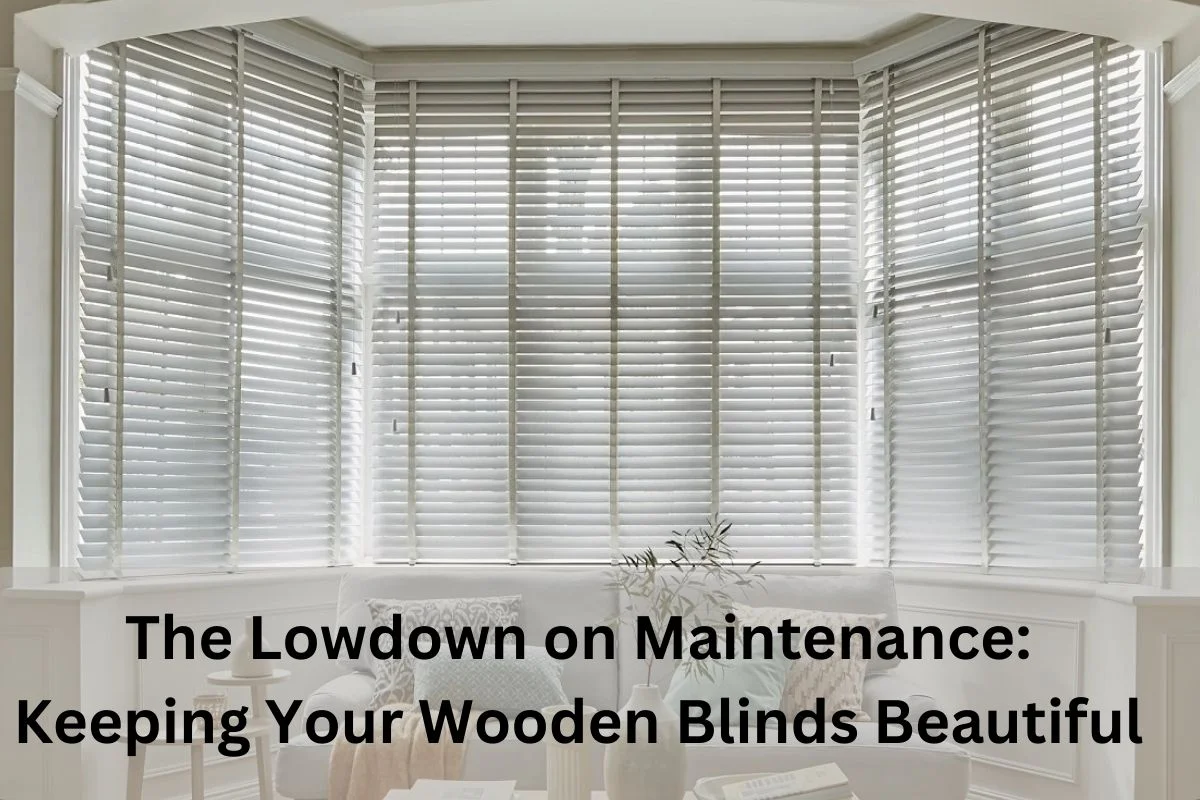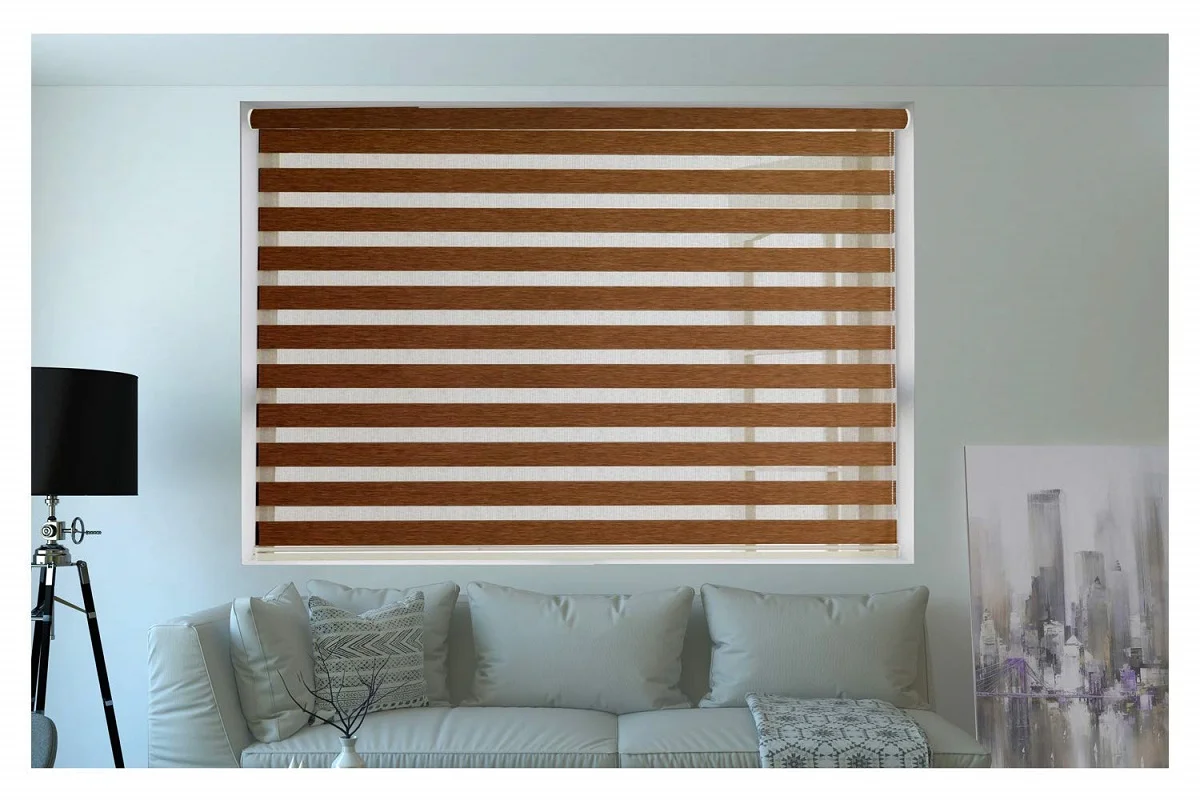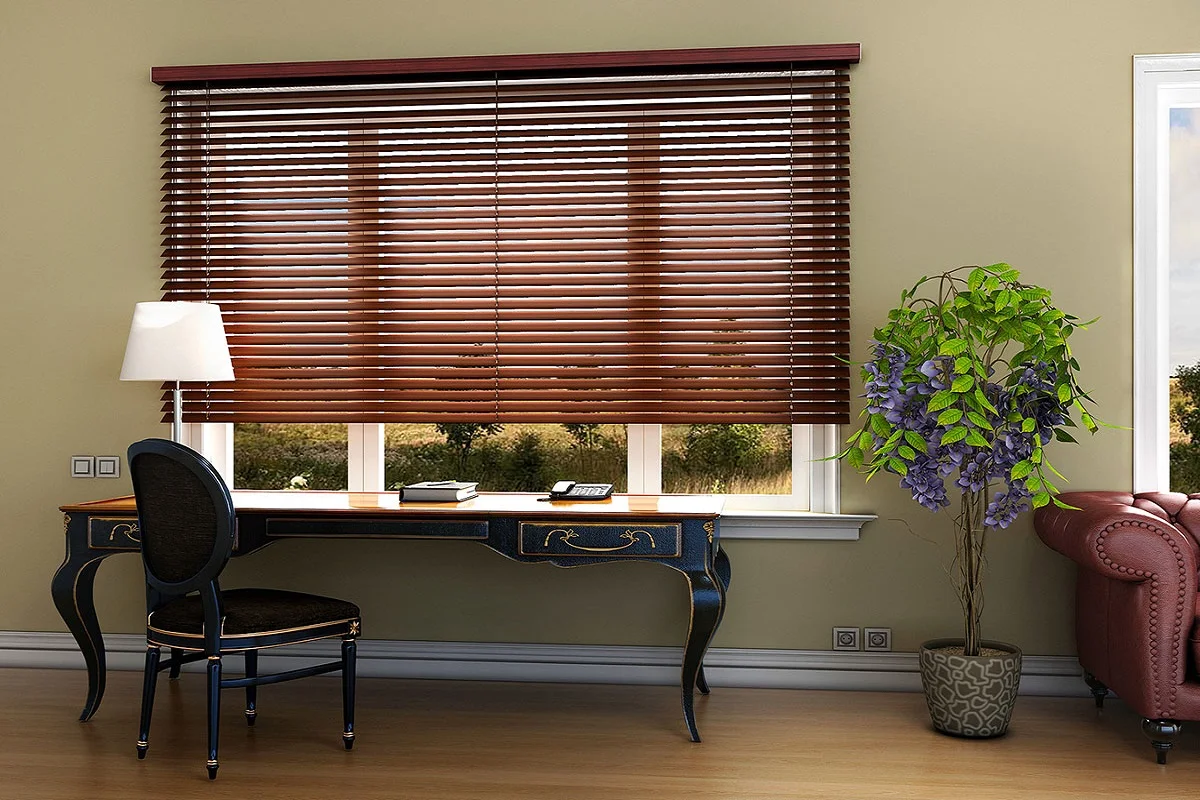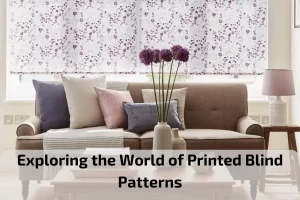Wooden blinds not only add a touch of sophistication to your living spaces but also bring the warmth of nature indoors. Their natural aesthetics and timeless appeal make them a popular choice for window treatments. However, like any investment in your home décor, wooden blinds require proper care and maintenance to ensure they retain their beauty and functionality over time.
In this guide, we’ll delve into the lowdown on maintenance for wooden Blinds, offering practical tips and insights to keep them looking as stunning as the day you installed them. From routine cleaning to addressing specific issues, we’ll cover the essential steps to preserve the integrity of your wooden blinds and extend their lifespan. Whether you’re a seasoned homeowner or a first-time wooden blind enthusiast, join us as we navigate the nuances of maintenance, allowing you to enjoy the full benefits of these elegant window treatments.
popularity of wooden blinds in home décor
Wooden blinds have risen to prominence in home décor, captivating homeowners with their timeless charm and versatile functionality. The popularity of wooden blinds can be attributed to several factors that make them a preferred choice for window treatments in contemporary interior design.
Natural Aesthetics: One of the key reasons for the widespread popularity of wooden blinds is their natural aesthetics. The inherent beauty of wood brings warmth and authenticity to living spaces, creating a connection with the outdoors. Wooden blinds seamlessly blend with various décor styles, from traditional to modern, adding a touch of sophistication to any room.
Versatility in Design: Wooden blinds offer a remarkable level of design versatility. Available in a wide range of finishes, stains, and wood types, they can be customised to match the unique style and color palette of any room. This adaptability makes wooden blinds a go-to choice for interior decorators and homeowners looking to create a cohesive and visually appealing home environment.
Timeless Appeal: Unlike trendy or fad-driven décor choices, wooden blinds boast a timeless appeal that transcends changing design trends. The classic and elegant look of wooden blinds ensures that they remain a relevant and stylish option for homeowners seeking enduring beauty in their living spaces.
Light Control: Wooden blinds provide excellent control over natural light. Homeowners can easily adjust the slats to regulate the amount of sunlight entering a room, creating a comfortable and well-lit ambiance. This practical feature enhances the overall functionality of wooden blinds and contributes to their popularity.
Privacy and Security: Beyond their aesthetic qualities, wooden blinds offer a sense of privacy and security. The sturdy and solid nature of wood provides an additional layer of insulation and protection, making them an ideal choice for those who prioritise comfort and safety in their homes.
Sustainable and Eco-Friendly Options: With an increasing focus on sustainability, wooden blinds have gained favour for being an eco-friendly choice. Many manufacturers offer blinds made from responsibly sourced wood or alternative materials that mimic the look of wood, catering to environmentally conscious consumers.
Ease of Maintenance: Wooden blinds are relatively easy to maintain, adding to their appeal. Regular dusting and occasional cleaning keep them looking fresh and beautiful. This low-maintenance characteristic makes wooden blinds a practical choice for busy homeowners seeking both style and convenience.
Benefits of wooden blinds
Wood blinds offer a myriad of benefits that make them a popular and enduring choice for window treatments in homes and commercial spaces. From their natural aesthetics to practical functionality, here are some key advantages of choosing wood blinds:
Timeless Elegance: Wood blinds exude timeless elegance and sophistication. Their natural beauty and warm tones contribute to a classic and inviting atmosphere in any room, complementing a variety of interior design styles.
Design Versatility: Available in a wide range of finishes, stains, and slat sizes, wood blinds offer unparalleled design versatility. This allows homeowners to customise their window treatments to perfectly match the aesthetic of their space.
Light Control: Wood blinds provide excellent control over natural light. The adjustable slats make it easy to regulate the amount of sunlight entering a room, allowing for a customizable balance between illumination and privacy.
Privacy and Security: The solid and sturdy nature of wood blinds enhances privacy and security in a home. When fully closed, these blinds create a barrier that adds an extra layer of insulation and protection.
Insulation Properties: Wood has inherent insulating properties, helping to regulate indoor temperatures. Wood blinds can contribute to energy efficiency by preventing heat loss during the winter and reducing heat gain in the summer, thereby lowering energy bills.
Durability: High-quality wood blinds are known for their durability and longevity. With proper care and maintenance, they can withstand the test of time, making them a sound investment for homeowners looking for a long-lasting window treatment solution.
Easy Maintenance: Cleaning and maintaining wood blinds is a straightforward process. Regular dusting and occasional cleaning keep them looking fresh and beautiful. This ease of maintenance adds to the practical appeal of wood blinds.
Sustainable Options: Many manufacturers offer wood blinds made from sustainably sourced materials, contributing to eco-friendly and sustainable living. Homeowners can choose blinds made from renewable resources, promoting responsible environmental practices.
Noise Reduction: Wood blinds can help reduce external noise, providing a quieter and more peaceful indoor environment. The solid construction of the blinds acts as a barrier, minimising the intrusion of outside sounds.
Increased Home Value: The aesthetic appeal and functional benefits of wood blinds can enhance the overall value of a home. Potential buyers often appreciate the timeless and high-quality features associated with wood blinds, making them a desirable feature in the real estate market.
Uses for Wooden Blinds
Home Interiors:
Living Rooms: Wooden blinds add warmth and sophistication to living spaces, providing an elegant backdrop for socialising and relaxation.
Bedrooms: Create a cosy and inviting atmosphere in bedrooms while maintaining privacy and controlling natural light with wooden blinds.
Dining Rooms: Enhance the dining experience by incorporating wooden blinds, which contribute to a refined and comfortable setting.
Home Offices:
Productivity and Comfort: Wooden blinds in home offices offer a blend of natural beauty and practical functionality, providing a comfortable and productive work environment.
Kitchens:
Light Control: Control the amount of sunlight entering the kitchen while adding a touch of natural charm to the space.
Easy Cleaning: Wooden blinds are easy to clean, making them a practical choice for spaces like kitchens that may be prone to splashes and spills
Bathrooms
Moisture Resistance: opt for faux wood blinds in bathrooms for a wood-like appearance with added resistance to moisture and humidity.
Commercial Spaces
Offices: Wooden blinds can contribute to a professional and sophisticated ambiance in office spaces, creating an inviting environment for clients and employees.
Retail Stores: Enhance storefronts with wooden blinds to create an attractive and inviting display while allowing for effective light control.
Restaurants and Cafes
Ambiance: Wooden blinds can be used to create a cosy and intimate atmosphere in restaurants and cafes, contributing to a pleasant dining experience.
Privacy: Provide diners with privacy during evening hours without compromising on the aesthetic appeal of the space.
Hotels and Hospitality:
Guest Rooms: Wooden blinds in guest rooms add a touch of luxury and sophistication, offering guests a comfortable and visually pleasing environment.
Lobbies and Common Areas: Use wooden blinds in hotel lobbies and common areas to create a welcoming and upscale atmosphere.
Conservatories and Sunrooms:
Natural Aesthetics: Wooden blinds can enhance the beauty of conservatories and sunrooms, providing a natural and harmonious connection with the outdoors.
Temperature Control: Regulate sunlight to maintain comfortable temperatures in these spaces.
Entertainment Spaces
Home Theaters: Create a cinematic atmosphere by using wooden blinds to control light and enhance the viewing experience.
Game Rooms: Add a touch of style to game rooms while maintaining flexibility in lighting.
Outdoor Spaces:
Patio or Deck Enclosures: Faux wood blinds can be used in outdoor enclosures to provide privacy and protection from the elements.
Disadvantage of wooden blinds
White wooden blinds have numerous advantages, it’s important to consider potential disadvantages before making a decision. Here are some drawbacks associated with wooden blinds
Susceptibility to Moisture
Warping and Damage: Real wood blinds can be prone to warping or damage in high-humidity environments, such as bathrooms or kitchens. Exposure to moisture over time may lead to deformation and a decrease in their aesthetic appeal.
Cost:
Higher Initial Investment: Wooden blinds are often more expensive compared to alternatives like vinyl or aluminium blinds. The cost of real wood, coupled with the craftsmanship involved, can make them a pricier option.
Limited Color Options:
Natural Tones: While the natural tones of wood are often appreciated, the colour options are limited compared to other materials. If you’re seeking a broader range of colours, you may find the choices in wooden blinds somewhat restrictive.
Weight:
Heavier Construction: Wooden blinds can be heavier than alternatives, making them less suitable for very large windows. The added weight may necessitate additional support and can be cumbersome to operate.
Maintenance Requirements:
Regular Cleaning: Wooden blinds require regular cleaning to prevent dust buildup and maintain their appearance. This maintenance can be more demanding compared to some other materials.
Vulnerability to Insects:
Wood-Boring Insects: Real wood blinds can be susceptible to wood-boring insects like termites. While proper treatment and finishes can mitigate this risk, it’s an aspect that homeowners in certain regions need to be mindful of.
Environmental Impact:
Sustainability Concerns: Depending on the source of the wood, there may be environmental concerns regarding deforestation. Opting for blinds made from sustainably sourced wood or alternative materials can mitigate this issue.
Fading Over Time:
Exposure to Sunlight: Continuous exposure to direct sunlight may cause the color of wooden blinds to fade over time. This is a consideration, especially for blinds in sun-drenched areas.
Complex Installation:
Professional Installation: Installing wooden blinds may require professional assistance, particularly for custom or larger installations. This can add to the overall cost of the window treatment.
Limited Flexibility
Less Flexible Than Some Alternatives: Wooden blinds are generally less flexible than materials like aluminium or fabric, limiting their ability to adapt to uniquely shaped windows or openings
Conclusion
In conclusion, while wooden blinds undeniably offer a classic and sophisticated touch to interior spaces, it’s crucial to weigh both their advantages and disadvantages before making a decision. The timeless elegance, natural aesthetics, and versatility of wooden blinds make them a favored choice for many homeowners and designers. However, challenges such as susceptibility to moisture, cost considerations, and maintenance requirements should be carefully considered based on individual preferences and the specific environment in which they will be used.









